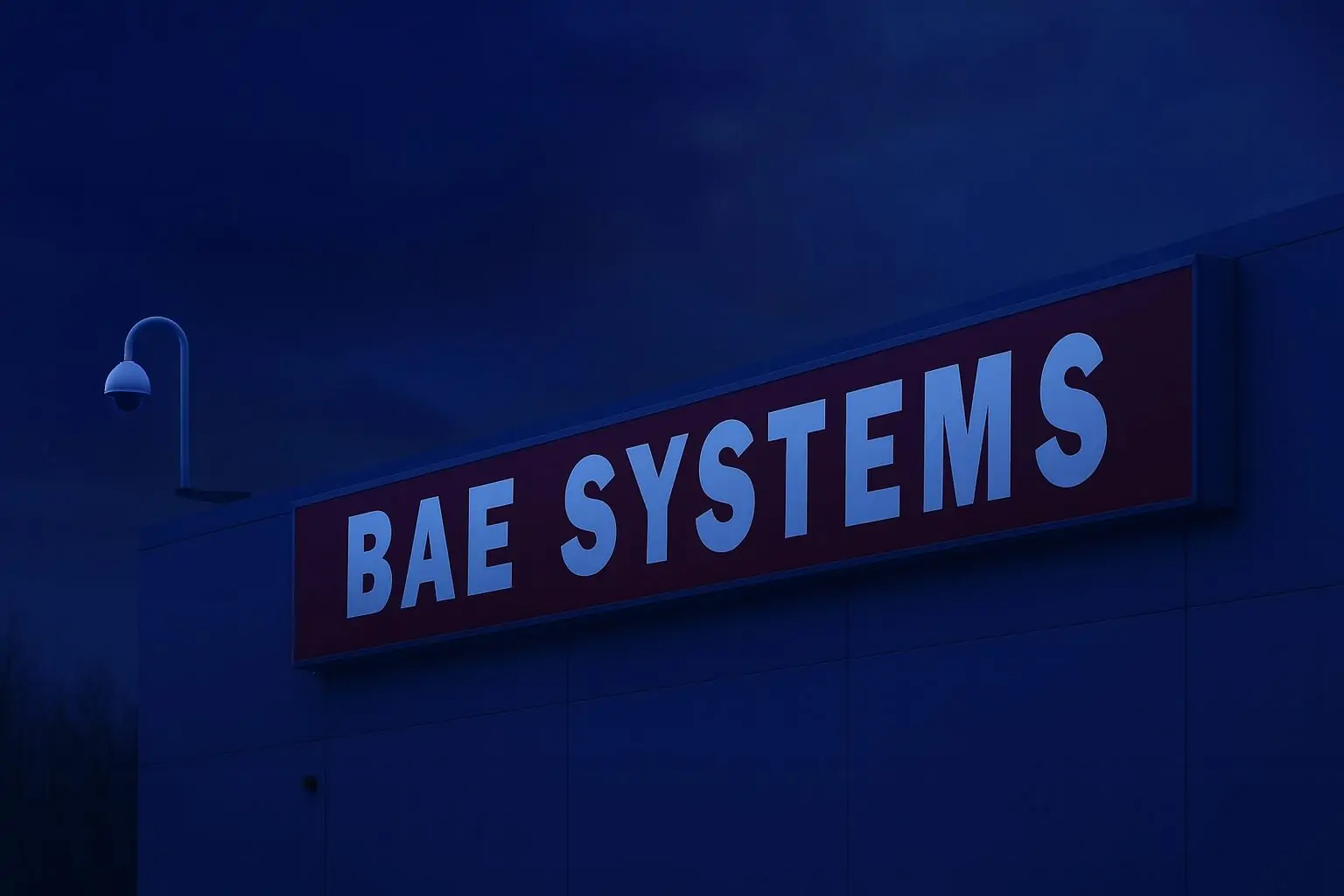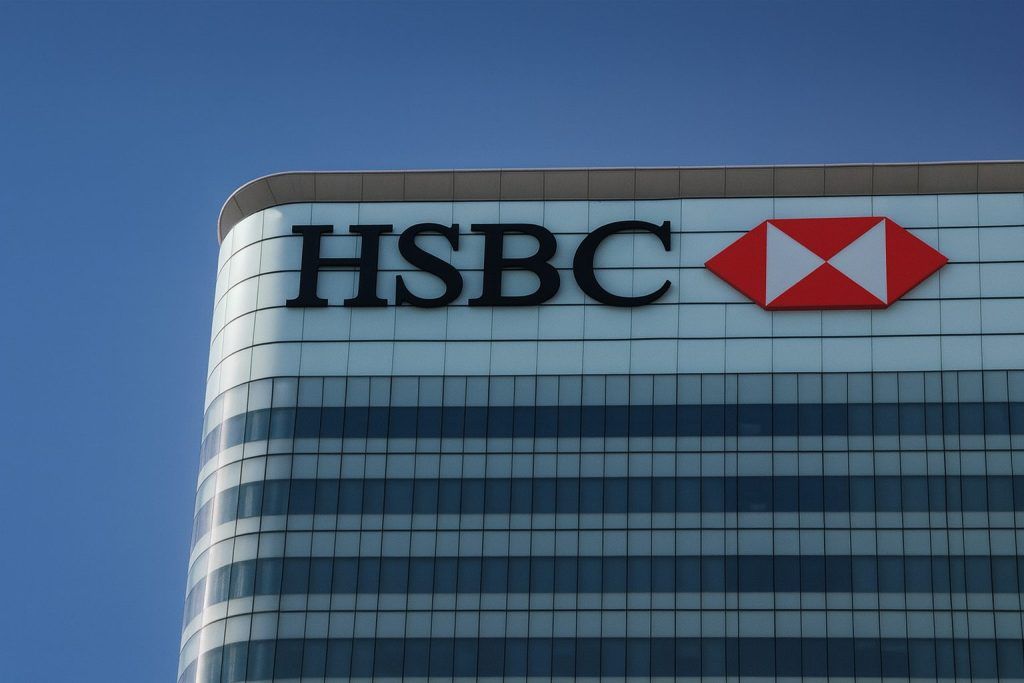BAE Systems plc (LON: BA.; ticker on screens often shown as BAES) traded around 1,654p on the London Stock Exchange on Friday, 28 November 2025, little changed on the day, as investors digested a fresh $390 million U.S. Army Bradley A4 contract, new armoured vehicle moves in Europe and India, and a still‑bullish full‑year 2025 outlook from management. [1]
This article is for informational purposes only and does not constitute investment advice. Share prices and valuations mentioned are approximate and can change throughout the trading session.
BAE Systems share price today (28 November 2025)
According to real‑time data from Investing.com, BAE Systems shares were quoted at about 1,654p, with a day’s range of roughly 1,653.5p–1,660.5p in London trading on 28 November 2025. [2]
Key snapshot:
- Last price: ~1,654p
- Previous close: 1,654p
- Day’s range: 1,653.5p–1,660.5p
- 52‑week range: 1,127.5p–2,071p [3]
Despite a choppy November, BAE shares remain up more than 40% year‑to‑date, helped by a powerful rally in defence stocks and a series of large orders across land, sea, air and space platforms. That performance is broadly in line with analysis cited by TS2/TechStock² and Simply Wall St. TechStock²
On valuation, Investing.com’s consensus dashboard shows:
- Average analyst target price: ~2,121p
- Implied upside from 1,654p: about +28%
- Consensus rating: broadly “Buy” [4]
That combination of strong price performance and still‑visible upside helps explain why BAE remains a core holding in many UK and European defence‑focused portfolios. [5]
Key BAE Systems news today – 28 November 2025
Several fresh or newly‑published items on 28 November 2025 are shaping the narrative around BAE Systems stock:
- $390m+ U.S. Army Bradley A4 contract modification
- BAE has secured a contract modification worth over $390 million from the U.S. Army to produce an additional batch of Bradley A4 Fighting Vehicles, the latest upgraded variant of the long‑running infantry fighting vehicle. [6]
- The order supports the ongoing modernisation of the Armored Brigade Combat Teams (ABCTs), with A4 upgrades focused on improved lethality, survivability and digitised electronics. [7]
- Production is distributed across multiple BAE facilities in the United States, in partnership with the Red River Army Depot in Texas, with first vehicle deliveries due by October 2026. [8]
- Six European armies move towards joint CV90 acquisition
- A detailed piece in Armada International, dated 28 November 2025, reports that the armed forces of Sweden, Norway, Finland, Lithuania, Estonia and the Netherlands have signed an agreement to coordinate the assessment, development and acquisition of BAE’s CV90 infantry fighting vehicle. [9]
- The framework aims to synchronise requirements, procurement schedules and logistics, enabling shared supply chains, interoperability and maintenance efficiencies. [10]
- The article also notes that Lithuania signed a technical agreement in November and that Denmark has committed to 44 further CV90s, bringing its future fleet to 159 vehicles (more on that below). [11]
- BAE Systems and Naval Group compete over India’s INS Vishal supercarrier concept
- Reporting from Indian Defence News highlights growing competition between BAE Systems and France’s Naval Group to partner India on its proposed INS Vishal supercarrier, envisaged at around 65,000+ tonnes and equipped with CATOBAR (catapult‑assisted take‑off) technology. [12]
- BAE is pitching a design lineage based on the UK’s Queen Elizabeth‑class carriers, with modular construction and compatibility with aircraft such as the Rafale‑M and potentially the F‑35B, along with wider industrial cooperation (including future fighter programmes such as Tempest). [13]
- Naval Group is reportedly offering a larger, nuclear‑powered carrier concept drawing on the Charles de Gaulle experience, underlining the scale and strategic importance of the programme. [14]
Together, these three themes — U.S. armoured vehicles, European land forces, and a potential Indian “blue‑water” flagship — give investors a sense of how geographically diversified BAE’s growth pipeline has become.
Bradley A4: why the $390m U.S. Army contract matters
The Bradley Fighting Vehicle is hardly new, yet the fresh $390m+ A4 contract tells a bigger story about how modern defence budgets actually work.
According to Defence Online and other defence outlets: [15]
- The A4 variant introduces digitised electronics, improved network connectivity and enhanced situational awareness for crews, plus changes aimed at boosting survivability and overall battlefield effectiveness.
- The order is structured as a contract modification under an existing programme, indicating a continuing stream of incremental upgrades rather than a single, discrete one‑off sale.
- Work is spread across a network of BAE sites in Pennsylvania, South Carolina, Alabama, Minnesota, California and Michigan, alongside maintenance activity at Red River Army Depot in Texas — which also makes the deal politically attractive in a U.S. election‑sensitive environment. [16]
From an equity story perspective, the Bradley A4 contract:
- Adds multi‑year, relatively visible revenue to the U.S. combat vehicles segment.
- Shows the U.S. Army is still investing in legacy but heavily upgraded platforms, not just next‑generation concepts.
- Strengthens BAE’s argument that it sits at the centre of NATO land‑forces modernisation, a theme that underpins investor demand for defence names.
TS2/TechStock²’s coverage frames this Bradley deal as November’s headline contract win for BAE, noting that it helped the shares tick higher in trading on 27 November. TechStock²
CV90 and BvS10: land systems momentum in Europe and India
Denmark’s extra 44 CV90s
On 21 November 2025, BAE confirmed that the Danish Ministry of Defence Acquisition and Logistics Organisation (DALO) has ordered 44 additional CV90 MkIIIC infantry fighting vehicles under a contract worth about $450 million, including spares, support, logistics and training. [17]
Key points from the contract announcement: [18]
- Denmark’s future CV90 fleet will rise to 159 vehicles, replacing a previously planned mid‑life extension of older CV9035DK platforms.
- The new CV9035 MkIIIC vehicles will share many features with the Netherlands’ latest CV90 mid‑life upgrade, including a modern turret, advanced thermal sights, enhanced protection and improved mobility.
- Deliveries are due by 2030, locking in long‑dated revenue and a long‑term support tail.
The follow‑on order demonstrates both customer satisfaction with the platform and how BAE is benefitting from European states re‑arming in response to a more contested security environment.
Six‑nation CV90 cooperation
The new six‑nation CV90 cooperation framework reported by Armada International adds an additional layer: instead of each country running its CV90 fleet in isolation, Sweden, Norway, Finland, Lithuania, Estonia and the Netherlands will coordinate assessment, development and future acquisitions. [19]
For BAE, this could mean:
- More predictable, smoother production runs if orders are harmonised.
- Shared upgrades and common standards, supporting larger economies of scale in everything from spare parts to software.
- A stronger position against rival infantry fighting vehicle designs in future competitions.
India’s BvS10 “Sindhu” all‑terrain vehicles
Coverage summarised by TS2/TechStock² points out that India has signed a contract for the BvS10 “Sindhu” articulated all‑terrain vehicle, manufactured locally by Larsen & Toubro (L&T) under licence from BAE Systems Hägglunds. TechStock²
According to that report: TechStock²
- Vehicles will be built at L&T’s Armoured Systems Complex in Hazira, with BAE providing design and technical support.
- The package includes life‑cycle support and logistics, which tend to carry better margins than a pure hardware sale.
- The deal marks the first BvS10 deployment in Asia, tailored to India’s tough geography — including mountains, deserts, marshland and amphibious environments.
The contract value has not been disclosed, but strategically it helps BAE deepen ties with India under New Delhi’s “Make in India” framework and gives the BvS10 platform a foothold in a vast new market. TechStock²
Missile canisters and space chips: smaller deals, strategic niches
BAE’s November newsflow is not just about tanks and IFVs.
Mk 41 Vertical Launch System canisters
On 25 November 2025, BAE announced a $22 million contract from the U.S. Navy for missile canisters used in the Mk 41 Vertical Launch System (VLS), with options that could bring the total to $317 million. [20]
ASDNews’ summary of the release highlights that: [21]
- The new award follows a much larger $738 million contract for Mk 41 canisters in July.
- BAE has supplied canisters for Mk 41 and Mk 57 launchers for more than 30 years, covering missiles such as Tomahawk, Standard Missile variants, Evolved SeaSparrow and anti‑submarine rockets.
- Work will be performed mainly in Aberdeen, South Dakota, with engineering support in Minneapolis.
Though smaller in headline value than submarines or aircraft, these contracts reinforce BAE’s position in high‑specialisation naval subsystems, with long product lifecycles and repeat business.
Space‑grade semiconductors with GlobalFoundries
On 19 November 2025, GlobalFoundries (GF) announced a collaboration in which BAE Systems will use GF’s 12nm FinFET process at its Malta, New York fab to build radiation‑hardened chips for space, integrated into BAE’s RH12™ Storefront platform. TechStock²
As summarised by TS2/TechStock² and the GF release: TechStock²
- The RH12 Storefront provides a “turnkey” environment for designing 12nm radiation‑hardened integrated circuits for space avionics and telecoms payloads.
- GF’s Malta facility is cleared for sensitive defence and aerospace work under U.S. export controls.
- The initiative is about long‑term positioning in high‑margin space electronics rather than near‑term revenue.
For investors, these technology‑heavy niches support the idea that BAE is not just a “metal‑bender” but also a player in advanced electronics and space systems, aligning with NATO and U.S. priorities in space and missile defence. [22]
Full‑year 2025 outlook: guidance still pointing up
BAE’s 10‑month trading update and market statement on 12 November 2025 is the macro backdrop to all this contract noise. [23]
Across BAE’s own update and coverage by Reuters, Investing.com, Hargreaves Lansdown and others, the key guidance points are: [24]
- Sales growth (2025): expected at +8% to +10% versus 2024 sales of £28.3bn.
- Underlying EBIT growth:+9% to +11%.
- Underlying EPS growth:+8% to +10% from 68.5p.
- Free cash flow: projected to exceed £1.1bn in 2025.
- Cash returns: around £1.5bn expected to be returned to shareholders via dividends and buybacks this year.
- Order intake: more than £27bn of new orders booked so far in 2025, including major deals for Typhoon aircraft for Türkiye, U.S. electronic systems and combat vehicles, MBDA missile work and submarine programmes.
Hargreaves Lansdown’s analysis also notes an order book of about £75bn (near record highs) and points to a prospective dividend yield of roughly 2.2%, albeit with the standard caveat that no dividend is guaranteed. [25]
Reuters’ write‑up of the same update stressed that the shares were already up about 57% year‑to‑date as of 12 November, reflecting strong demand for defence exposure, but that BAE still sees “significant opportunities” across space systems, missile and air defence, combat aircraft, vehicles, frigates, submarines, drones and counter‑drone technologies. [26]
How the market is valuing BAE Systems
Different research houses frame BAE’s valuation in slightly different ways, but the broad picture is consistent:
- Forward growth still healthy: Smartkarma’s earnings summary emphasises the same 8–10% sales growth and 9–11% EBIT growth for 2025, alongside an expectation that free cash flow could reach about £1.5–1.6bn at the upper end. [27]
- Mixed but broadly positive recommendations: Smartkarma cites a split of roughly 16 “buy”, 5 “hold” and 4 “sell” recommendations across the analyst community, indicating broad support but not universal enthusiasm at current levels. [28]
- Dividend profile: Hargreaves Lansdown points to that ~2.2% forward yield, supported by long‑cycle contracts and relatively predictable free cash flow. [29]
- Price targets vs spot price: Investing.com’s consensus target of about 2,121p implies nearly 30% upside from the current 1,654p area, although that upside partly reflects earlier pull‑backs from the 52‑week high of 2,071p. [30]
Put simply: BAE no longer looks cheap, trading on a forward earnings multiple in the low‑20s and well above pre‑Ukraine norms, but many analysts argue that the sector has structurally re‑rated as NATO countries commit to higher, longer‑term defence spending. [31]
Risks investors should keep in mind
The newsflow is positive, but there are clear risks alongside the upside:
- Political and budget risk: BAE itself has warned that a prolonged U.S. government shutdown could delay contract funding and payments, even though no material impact has been seen so far. [32]
- Execution risk on large programmes: Submarines, frigates, fighter jets and complex electronics programmes carry the risk of cost overruns or schedule slippage, which could erode margins or prompt contractual disputes.
- Valuation risk: After a multi‑year rally, setbacks on individual contracts or any moderation in defence‑spending ambitions could have an outsized impact on sentiment because the stock now trades on richer multiples. [33]
- Industrial and labour constraints: Defence order books across Europe and North America are booming at the same time, which can stretch supply chains and skilled labour pools, potentially pressuring delivery schedules and costs.
These factors don’t erase the bull case, but they do shape the risk/reward profile for anyone thinking about exposure to the shares.
What today’s developments mean for BAE Systems stock
Putting it all together, 28 November 2025 finds BAE Systems in an interesting spot:
- Share price: roughly flat on the day around 1,654p, in the middle of its recent range but still well below the 2025 high. [34]
- Contract momentum: the Bradley A4 deal, CV90 orders for Denmark, the six‑nation CV90 framework, the BvS10 Sindhu contract in India, Mk 41 missile‑canister work and space‑chip collaboration with GF all support a story of diversified, multi‑year growth. [35]
- Strategic positioning: BAE is deeply embedded in NATO’s re‑armament push, U.S. land and naval programmes, and increasingly in Indo‑Pacific naval and land modernisation efforts. [36]
- Guidance and balance sheet: management is reaffirming robust 2025 guidance, supported by a record‑near order book and strong cash generation prospects, while committing to continue sizeable dividends and buybacks. [37]
For market participants following BAE Systems today, the stock essentially represents a leveraged play on sustained global defence spending, with the latest Bradley and CV90 newsflow providing fresh evidence that this spending is still turning into concrete orders.
How attractive that looks depends on each investor’s tolerance for geopolitical, political‑budget and valuation risk — but as of 28 November 2025, BAE Systems remains one of the clearest pure‑play ways to ride the defence‑spending super‑cycle on the London market.
References
1. www.investing.com, 2. www.investing.com, 3. www.investing.com, 4. www.investing.com, 5. www.smartkarma.com, 6. www.defenceonline.co.uk, 7. www.defenceonline.co.uk, 8. www.defenceonline.co.uk, 9. www.armadainternational.com, 10. www.armadainternational.com, 11. www.armadainternational.com, 12. www.indiandefensenews.in, 13. www.indiandefensenews.in, 14. www.indiandefensenews.in, 15. www.defenceonline.co.uk, 16. www.defenceonline.co.uk, 17. www.asdnews.com, 18. www.asdnews.com, 19. www.armadainternational.com, 20. www.asdnews.com, 21. www.asdnews.com, 22. www.sharesmagazine.co.uk, 23. www.investegate.co.uk, 24. www.investegate.co.uk, 25. www.hl.co.uk, 26. www.reuters.com, 27. www.smartkarma.com, 28. www.smartkarma.com, 29. www.hl.co.uk, 30. www.investing.com, 31. www.investing.com, 32. www.reuters.com, 33. www.smartkarma.com, 34. www.investing.com, 35. www.defenceonline.co.uk, 36. www.sharesmagazine.co.uk, 37. www.investegate.co.uk







